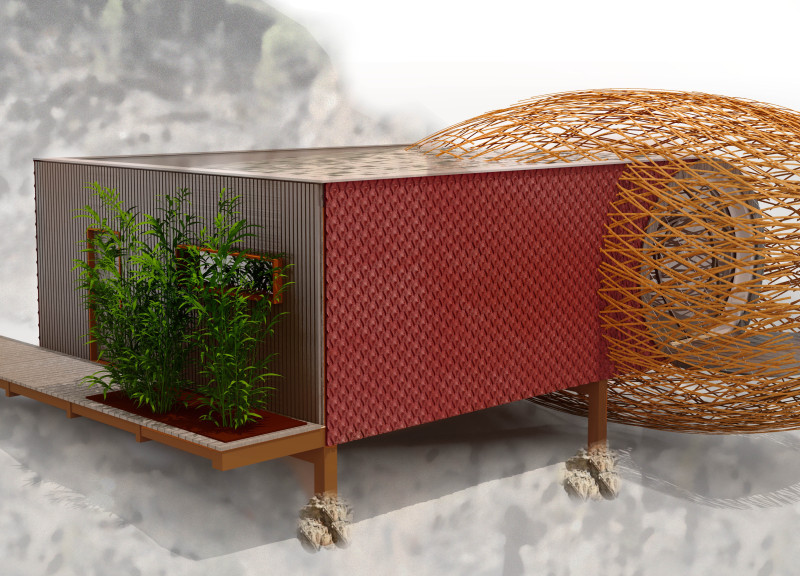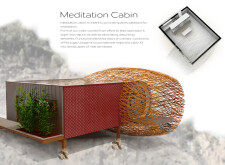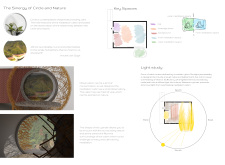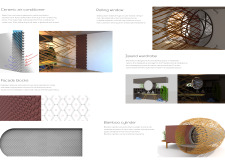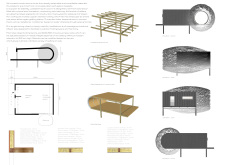5 key facts about this project
The primary function of the Meditation Cabin is to provide a versatile space for various activities related to wellness, including meditation, yoga, and quiet reflection. The architecture is carefully planned to accommodate these functions without compromising on the serenity that such practices demand. With a design rooted in simplicity and ease of use, every element is aligned towards creating a peaceful experience for its occupants.
One notable aspect of the cabin is its unique circular form, which is symbolic of wholeness and tranquility. This circular layout is not only visually appealing but also fosters a sense of community within the space, allowing for multiple users to engage in activities simultaneously. The cabin includes designated areas for individual reflection, group sessions, and even massage treatments, demonstrating a holistic approach to wellness in architectural design.
The project incorporates locally sourced materials, reinforcing its connection to the landscape. Bamboo is used for features that provide both privacy and diffused light, contributing to a warm and inviting interior. The facade includes blocks made from local materials featuring artistic designs reminiscent of traditional Portuguese architecture, anchoring the cabin within its cultural context. This choice of materials not only enhances the aesthetic quality of the building but also ensures compatibility with the ecological parameters of the environment.
Architectural integrity is maintained through the use of components such as a copper-seamed roof, which combines durability with an organic appearance that reflects the surrounding terrain. Additionally, the structural elements made from steel allow for expansive open spaces, creating an airy atmosphere that encourages free movement and interaction. The flooring and decking are composed of wood, fostering an earthy connection that enhances the cabin's overall sensory experience.
The architectural design takes into consideration the interplay of light and space, with large rolling windows that can be closed during inclement weather, preserving the tranquil ambiance within. These thoughtful design choices reflect a commitment to user comfort without detracting from the natural beauty encasing the cabin. The internal spaces are equipped with features such as an island wardrobe that doubles as a functional divide, ensuring flexibility in use while maintaining an open plan.
This project exemplifies a forward-thinking approach in architecture by skillfully blending aesthetics and function. The Meditation Cabin serves as a model for how architecture can facilitate personal wellness and introspection while honoring its geographical and cultural roots. By engaging with the local environment and prioritizing the needs of its users, the design stands out as a contemporary yet grounded interpretation of architectural ideals.
For those interested in exploring the intricate details of the Meditation Cabin, including architectural plans, sections, and innovative design ideas, further examination of the project presentation will provide greater insights into its thoughtful design and execution.


